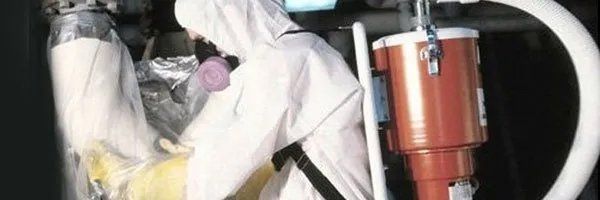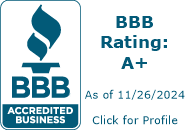Asbestos Removal & Encapsulation Services
Stamford, CT
EPA Licensed and Accredited
24/7 Same-Day Service
Price Matching
Request Consultation
SAP Request Form
Thank you for contacting us.
We will get back to you as soon as possible
Please try again later
Asbestos Abatement Services: Professional Removal and Disposal
Commercial, Residential, and Industrial Asbestos Service in Stamford, CT
If you live in Stamford, CT or surrounding areas, you may be at risk of asbestos exposure. Asbestos is a mineral fiber that was commonly used in building products before the mid 1970s, including floor tiles and adhesives, ceiling tiles, pipe insulation, fireproofing, shingles, sheetrock compound, boilers, roofing, and exterior siding.
Disturbing asbestos-containing materials during remodeling or demolition can release dangerous fibers into the air, putting everyone involved at risk of exposure. That's why it's important to call a professional like Chase Environmental LLC for safe asbestos evaluations and solutions.
Our experienced team offers air sampling, removal and remediation, as well as sealing or covering options to ensure the safety of your home or business. We have over 25 years of experience in the industry and are dedicated to keeping you and your family safe from the dangers of asbestos exposure.
If you suspect that your home or business may contain asbestos in the Stamford, CT area or nearby regions, don't wait to call Chase Environmental LLC. Our practices meet EPA standards and guidelines to ensure the safety of our clients. Contact us today for professional, safe asbestos removal and encapsulation services.

Affordable Environmental Services
Chase Environmental is your Stamford, CT area local environmental service provider specializing in asbestos, mold, and lead removal. Contact us today for your environmental solutions. Get professional environmental services at an affordable price for your home, office, or industry. Call the specialists at Chase Environmental for a estimate today!
-
Where Asbestos is Commonly Found?
Decades ago, asbestos was used in building materials found all over the common household. Although some of these materials have been removed from homes over time, some are still in use today. Here's where you may be able to find asbestos in your home:
HVAC system. Duct connectors, HVAC fabric, duct insulation, furnace cement, duct tape and even some kinds of ducts themselves can all contain asbestos.
Electrical system. Asbestos is used for wiring insulation, cable wrap and electrical shielding.
Home exterior. Asbestos can be found in felt paper, shingles, siding, roof sealant, and cement.
Insulation. Asbestos was used in the past for insulation, and can still be found in some insulation products today.
Flooring. Including floor tiles and sheet flooring, which were traditionally made with asbestos.
Asbestos was used most frequently in products before 1980, but today, the EPA still allows asbestos to be used in some household items and building materials. Consumers can find asbestos in everything from fire safety products to plaster and interior flooring.
-
Reasons to Check for Asbestos
Although asbestos can be found in many household products, it is often not a threat in modern homes. Asbestos is only toxic to humans when airborne. Encased in other materials, asbestos cannot be breathed in and thus cannot pose a danger to humans. Asbestos is a hazard when it is friable, meaning that the asbestos has begun to deteriorate and the shredding fibers are becoming airborne.
Homeowners and consumers should know where the asbestos in their house is located because if the asbestos is damaged, it can become friable. Asbestos is at the greatest risk of becoming damaged during home remodels, when it is being moved or when it is being cut down to a smaller size. Any homeowner with a structure built before 1980 who is planning to remodel or repair their home after a natural disaster should know which products in their home contain asbestos. If someone is looking to purchase built before 1978, they'll typically have to receive disclosure from the seller.
Identifying the products in the house that contain asbestos can be difficult or impossible for a person without formal training. Therefore, the best way to identify which parts of the house contain asbestos is to hire an inspector. Many states license asbestos inspectors, so the best way to choose a professional in your state is to check for licensure requirements and hire someone with the proper credentials.
A licensed inspector will come to the house and look in the standard locations where asbestos could be found. Most inspectors will produce a written report that the homeowner can use either for asbestos remediation or upcoming remodels.
-
Safer to Remove Asbestos From a Building or Leave It There?
When trying to decide whether to remove asbestos from your building, there are many factors to take into consideration. The first and often the most important is the condition of the asbestos. If the material has been cut into, broken, bent, scraped or in any other way damaged, the asbestos may be friable.
What is Friable Asbestos?
Asbestos fibers are toxic for humans and can cause cancer when inhaled. However, asbestos is usually encased in other materials. It is an ingredient in insulation, flooring and wiring, plastic or vinyl. It's only when those harder materials are damaged and the asbestos fibers become airborne that asbestos becomes a danger. It is this condition when asbestos fibers are released into the air, that is referred to as friable.
Location is another factor that could affect whether asbestos should be removed. Asbestos that is out in the open where it can easily be damaged is likely a much greater danger than asbestos that is located in a part of the home where people rarely go, like in the walls or an unfinished attic.
Sometimes, leaving asbestos in place isn't an option. Remodels, repairs, and other changes in the home can have an effect on whether asbestos should be removed. The removal process is complex and a homeowner who tries to remove their own asbestos may expose themselves and members of their household to asbestos fibers.
Reviews
EPA Licensed and Accredited
We take every precaution to make your property safe.
Call us today!
(203) 644-7864
Best in the business — conducted a thorough walkthrough with me, explained everything so that I was able to understand, and gave a very fair price. The work completed was exceptional. Highly recommend. Will certainly hire again.
- Robert W Reeder IV via Google
Learn More About Chase Environmental Asbestos,Lead and Mold Removal
Contact the specialists at Chase Environmental for your asbestos, lead, and mold removal solutions. We've been providing professional environmental health solutions to commercial, residential, and industrial clients in Norwalk and the surrounding counties of CT and NY since 1989. We're committed to providing all of our customers with a safe and healthy environment. All of our practices meet state and EPA regulations. Stay safe and healthy with our professional and affordable environmental health services. Call today.
serving Area
Fairfield
Norwalk
Stamford
Connecticut
Danbury
Greenwich
New Haven County
Hartford
Hartford, CT
Business Hours
Hours:



